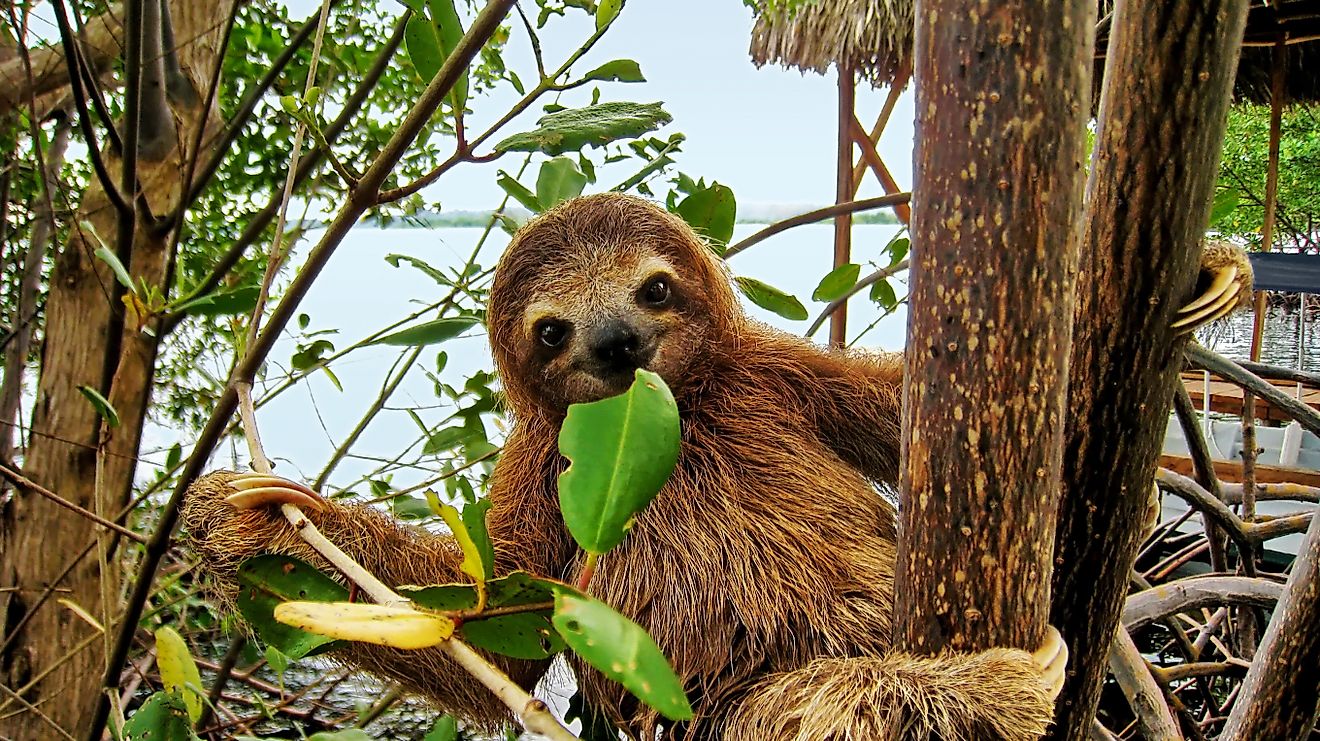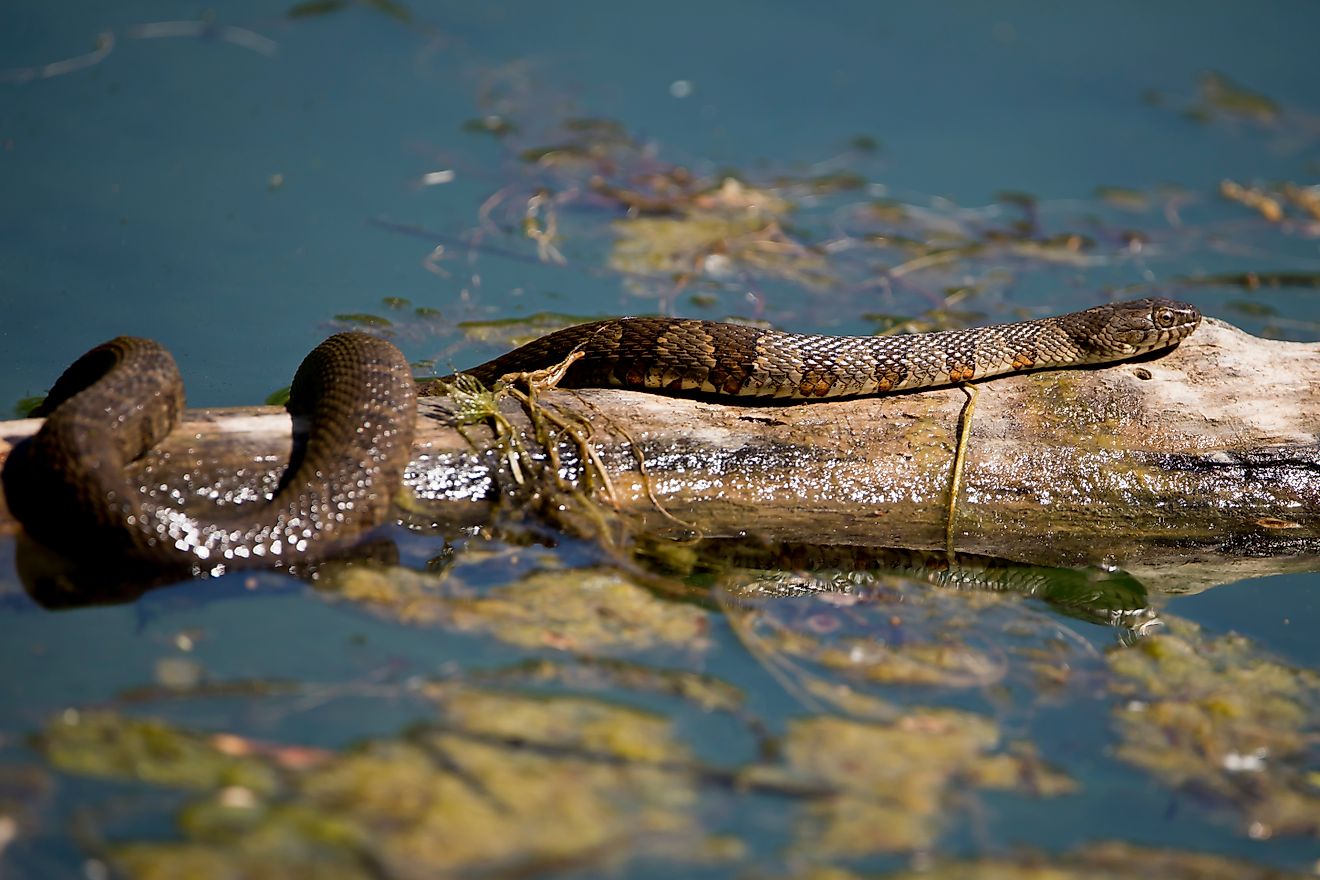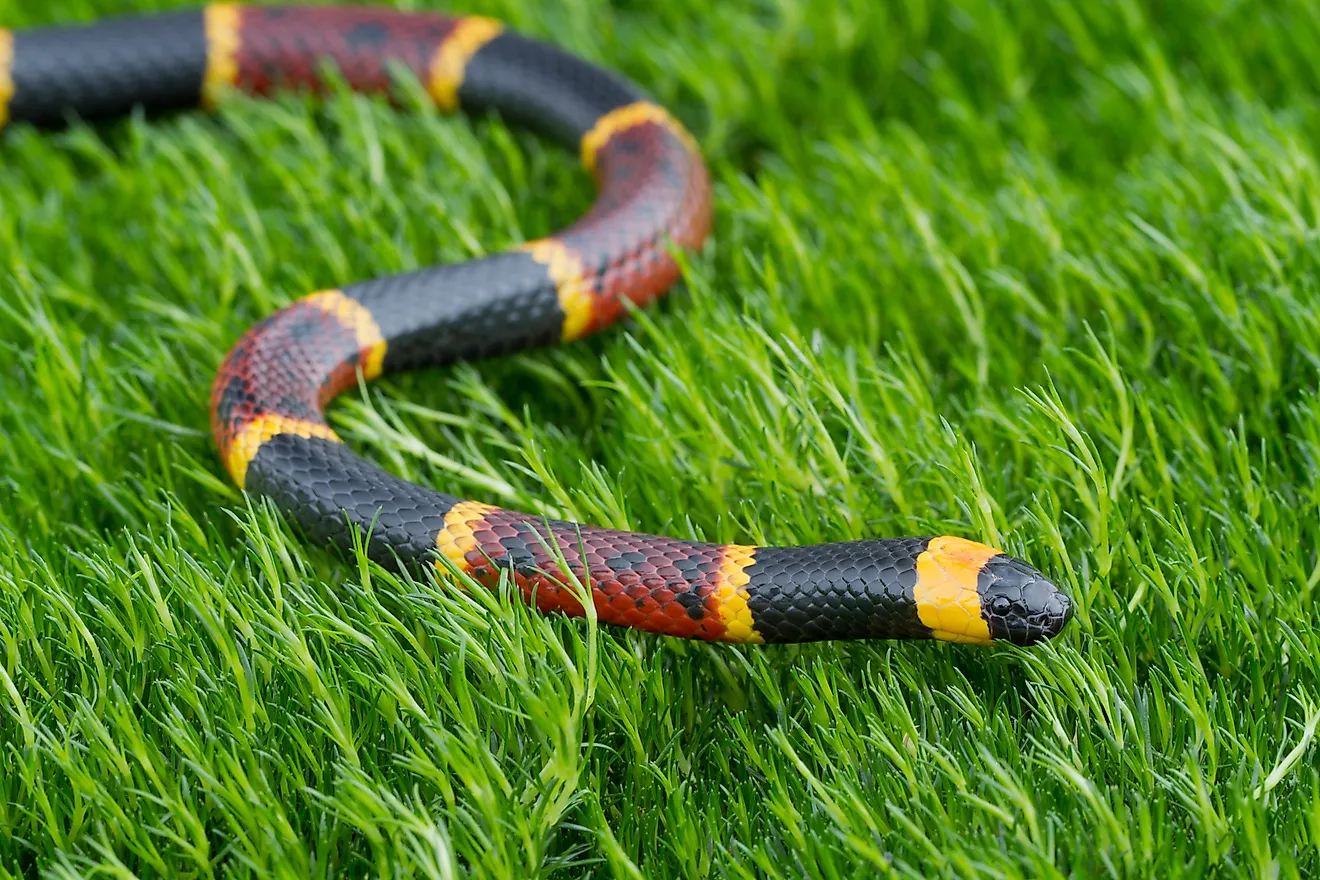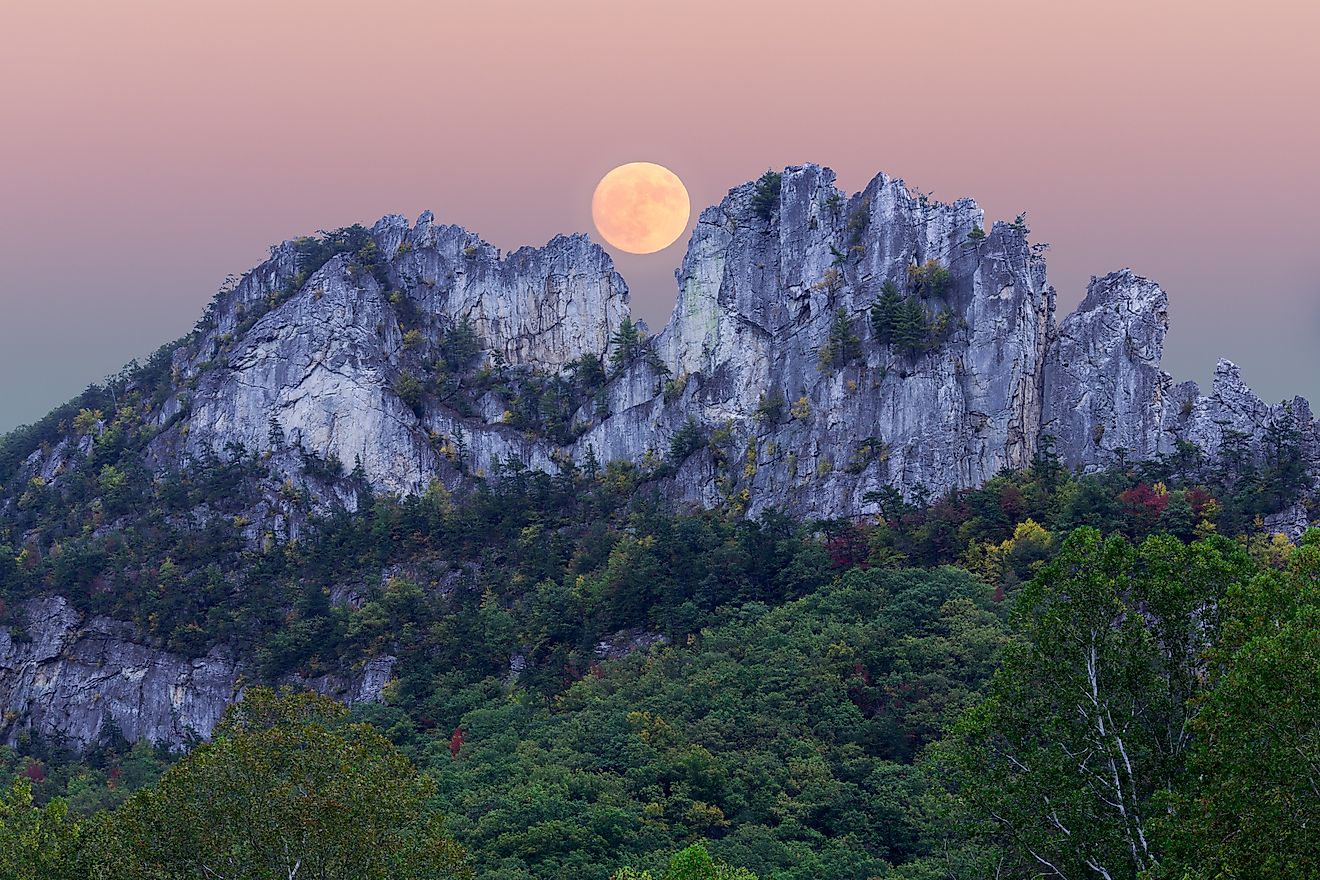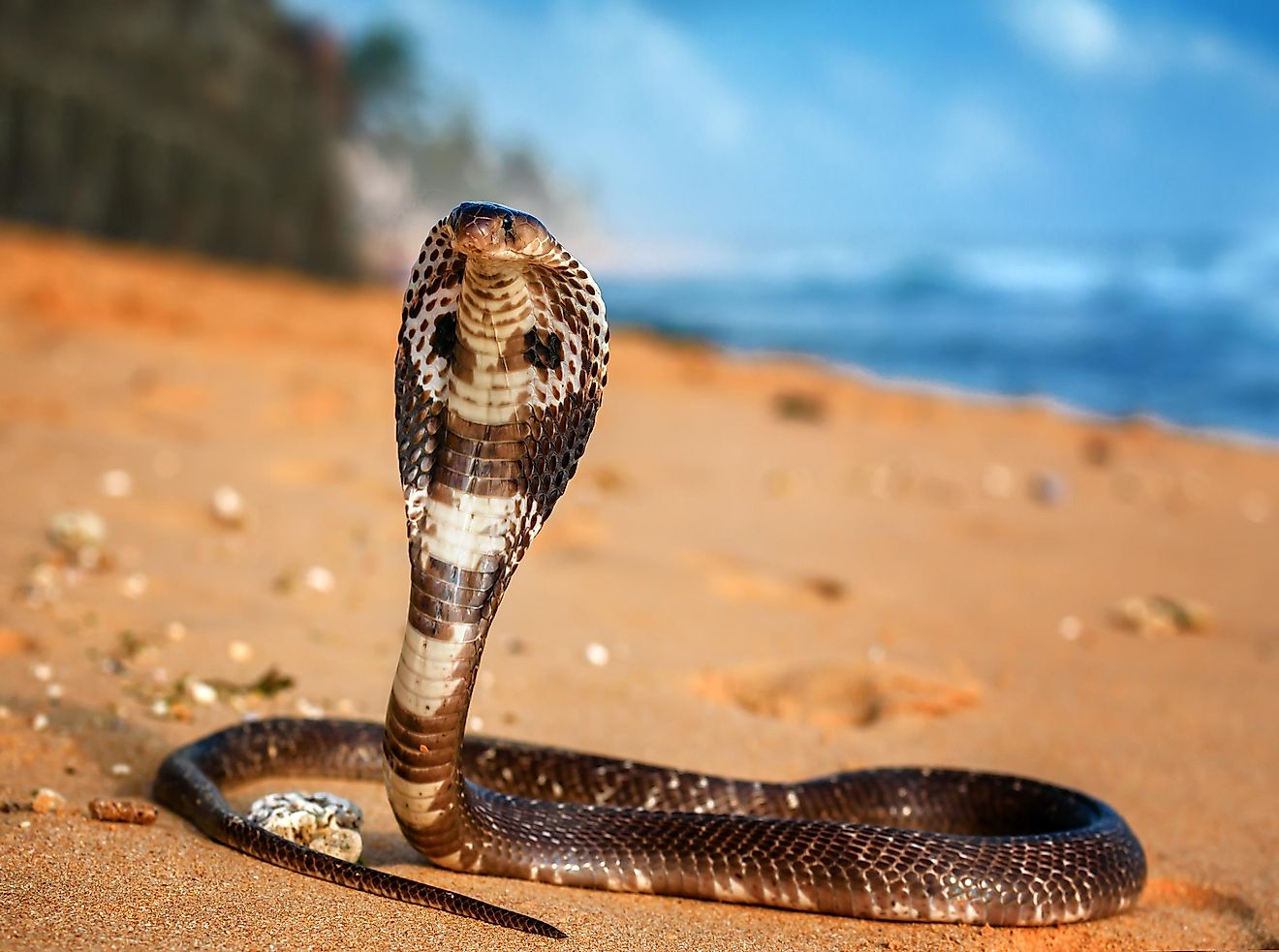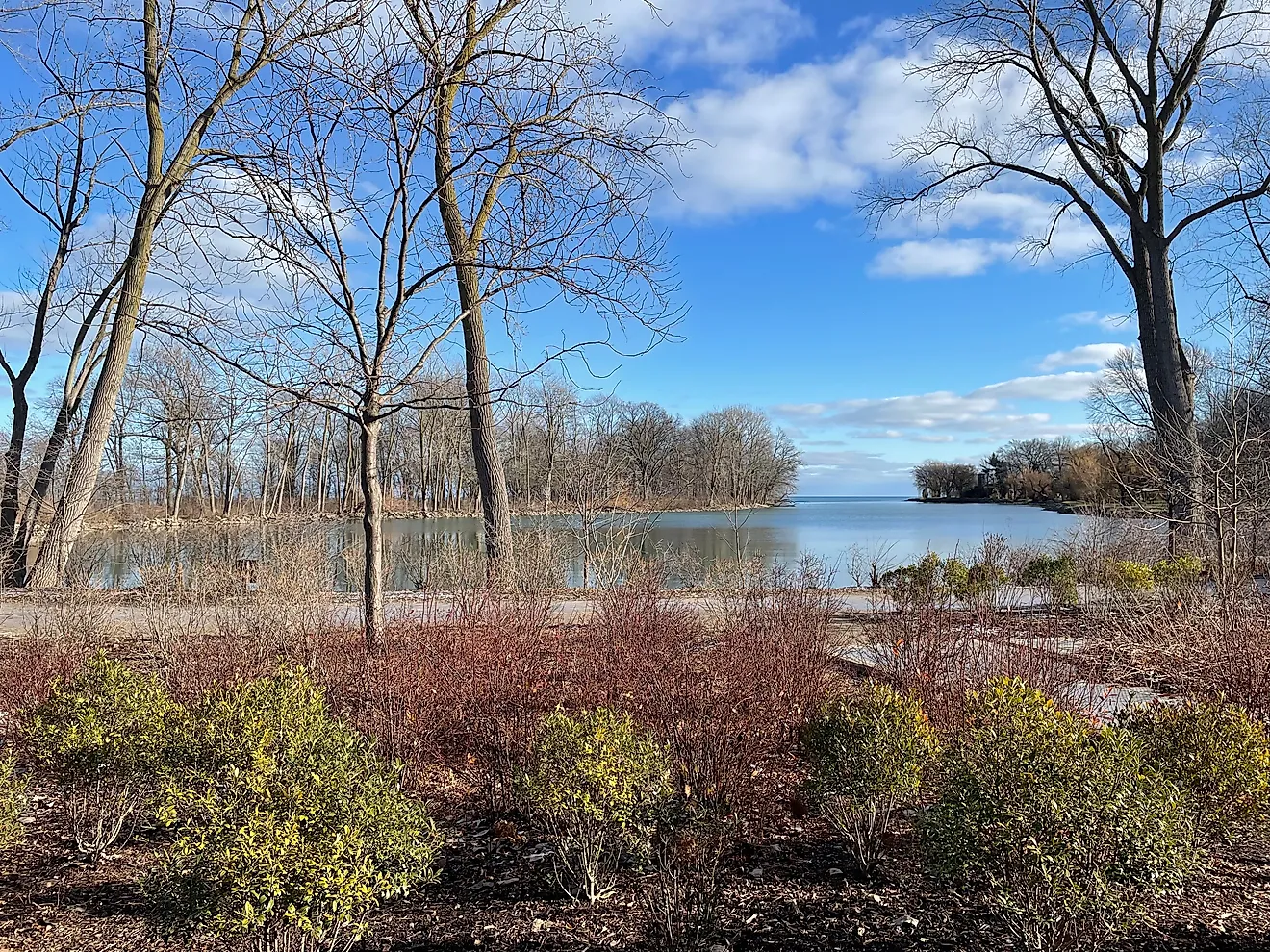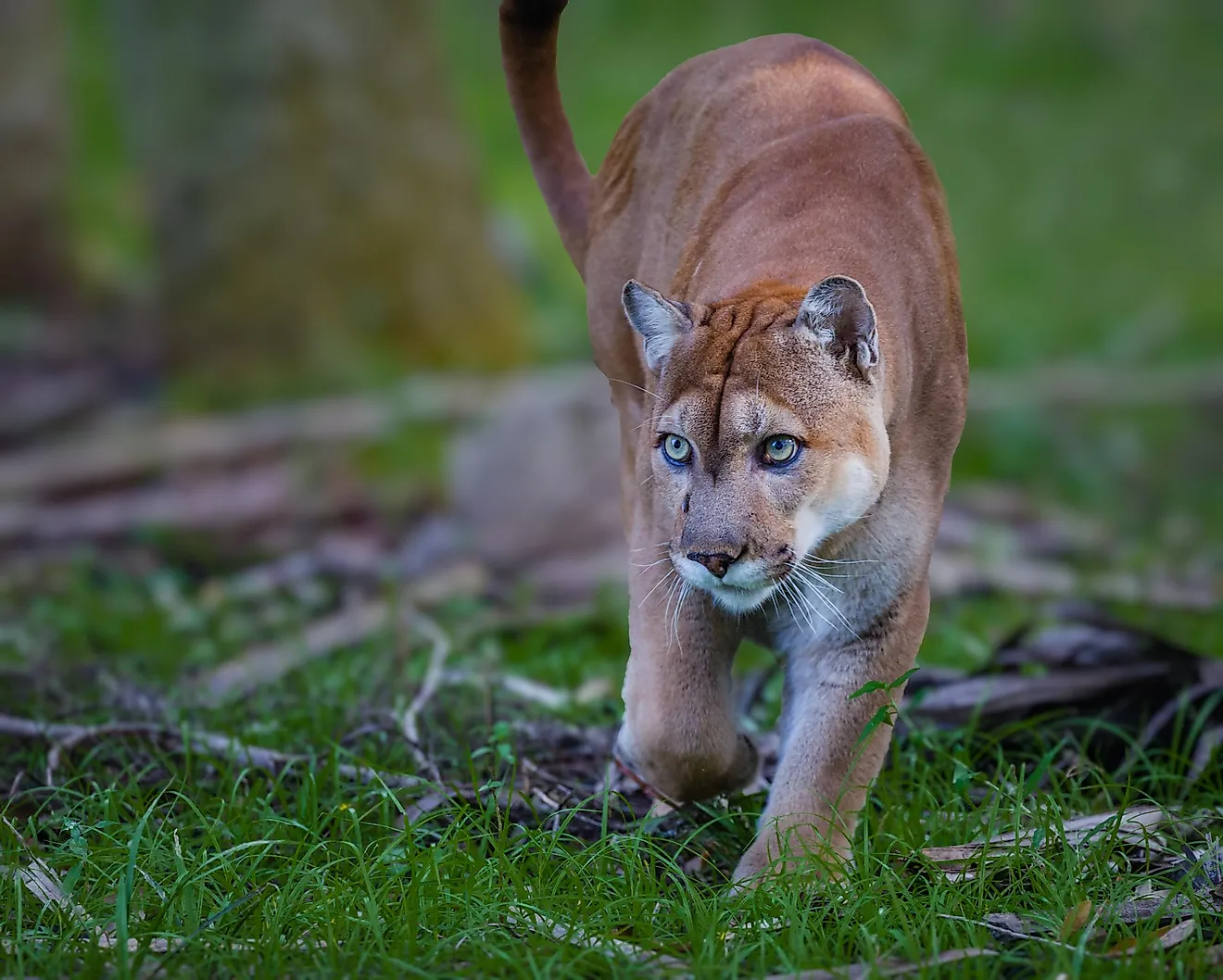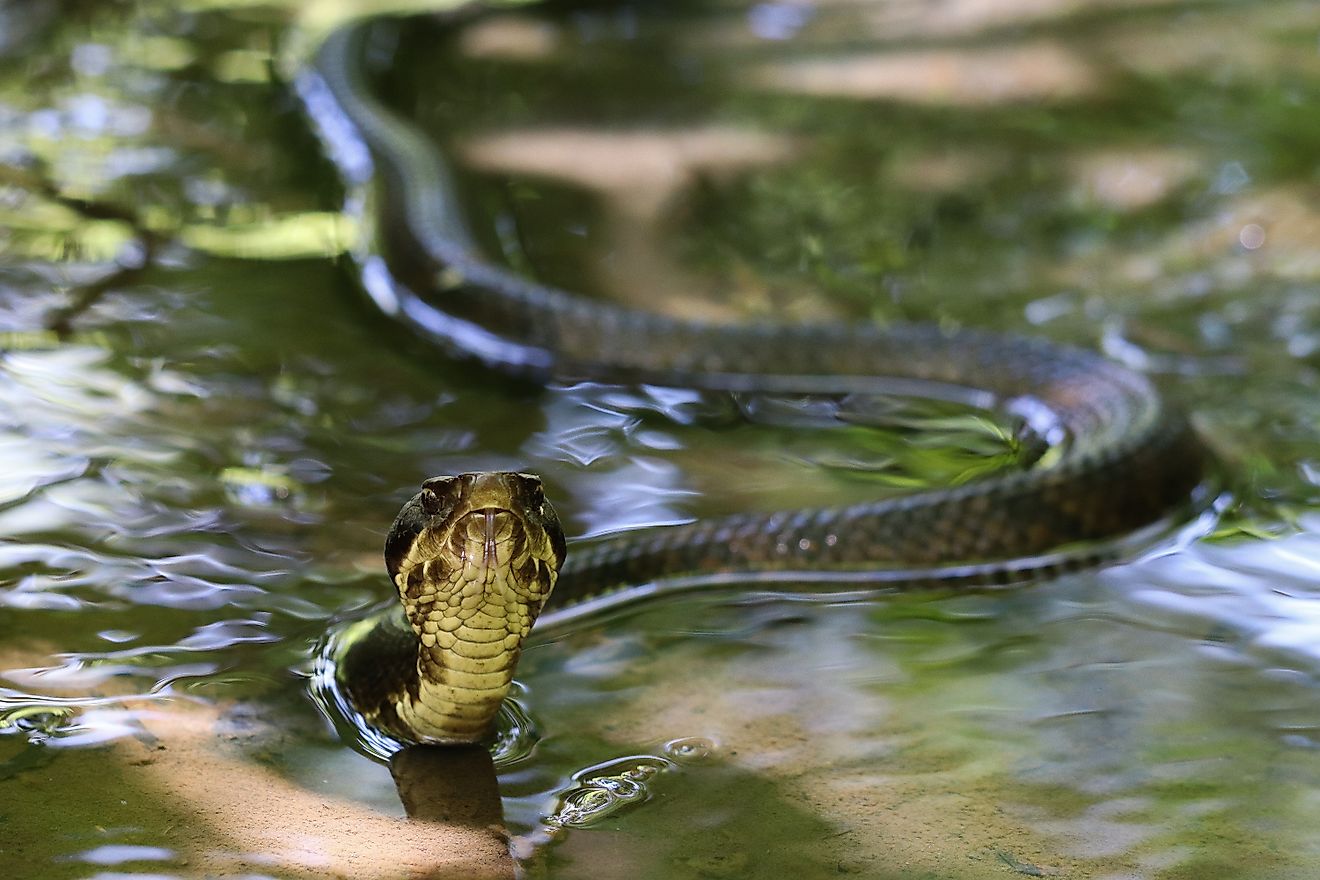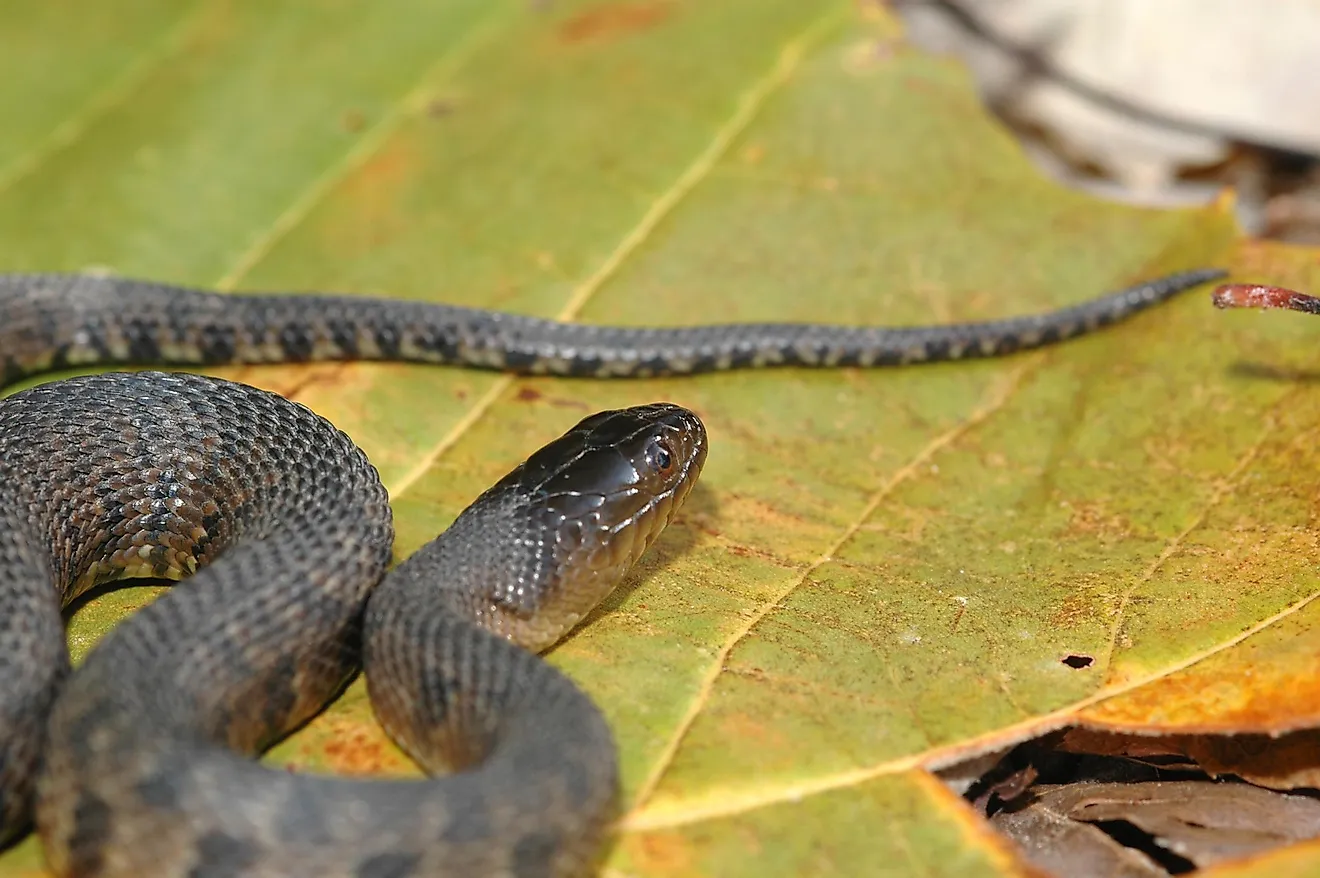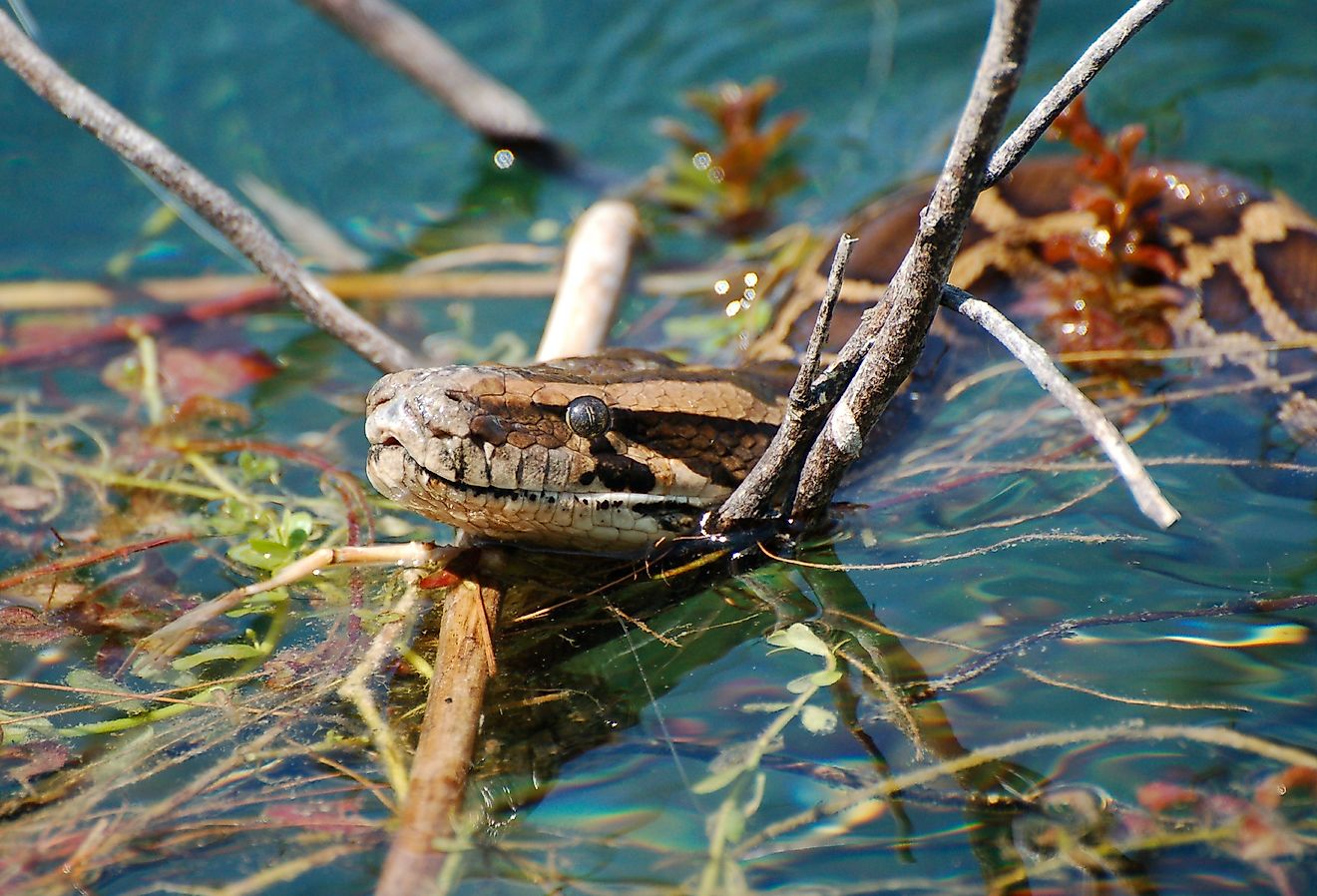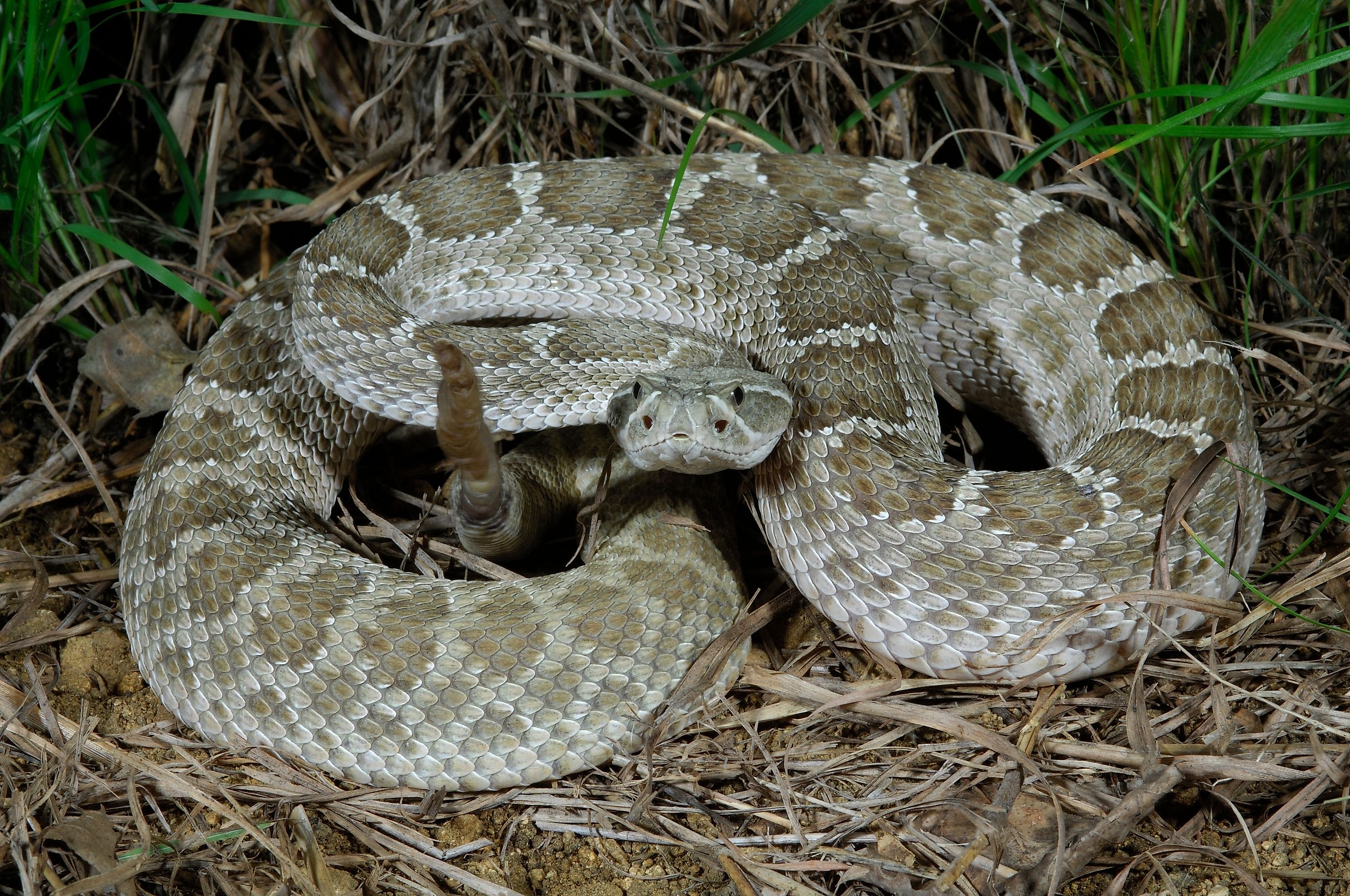
The Most Snake Infested Lakes in South Dakota
South Dakota is best known for its prairies and the natural splendor of the Black Hills. Its lakes are full of scenic delight for vacationers, fish for dedicated anglers, beaches for swimmers, and plenty of exciting boating opportunities. Many of these serene places boast plenty of wildlife, including deer and buffalo, herons and pheasants, and 18 different types of snakes. Whether you're hiking, camping, fishing, or riding a horse along a tree-dappled path, remember to watch out for the telltale slither of South Dakota's most famous reptiles.
Sylvan Lake in the Black Hills
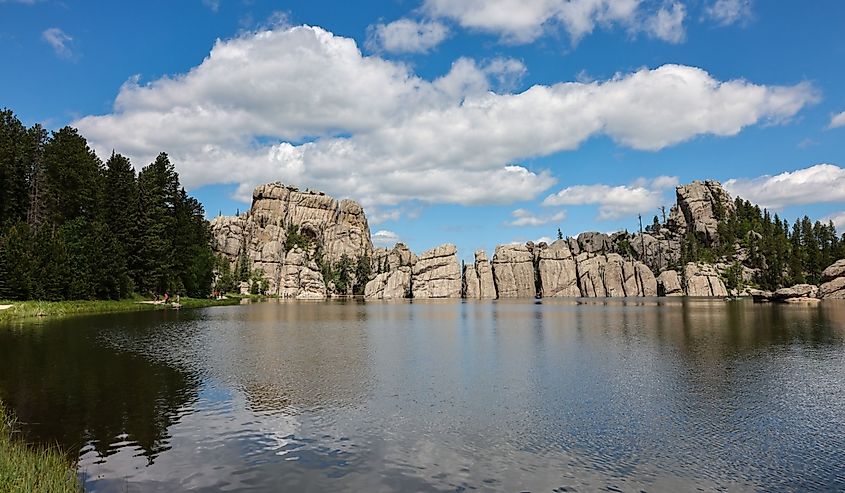
Sylvan Lake is known for its natural beauty, being the most photographed lake in the Black Hills (and possibly all of South Dakota). This gorgeous 17-acre lake is perfect for kayaking, fly fishing, and sunbathing. There's even a 1-mile hiking loop that brings walkers to peaceful waterfalls and scenic bridges. However, the spruce and pine trees can hide the most dangerous snake in South Dakota: The Prairie Rattlesnake. These efficient predators generally seek out rodents and other small mammals as their prey and prefer hiding from people in tall grass patches. Adult snakes can grow up to 50 inches and have light gray or tan scales with dark brown blotches ringed in white that run down the length of its body, a light yellow underside, and vertical pupils in a triangular head. They're especially thick around prairie dog towns. Watch your step if you hear a rattling sound coming from a grassy area! It could be the Prairie Rattlesnake.
Lewis and Clark Lake
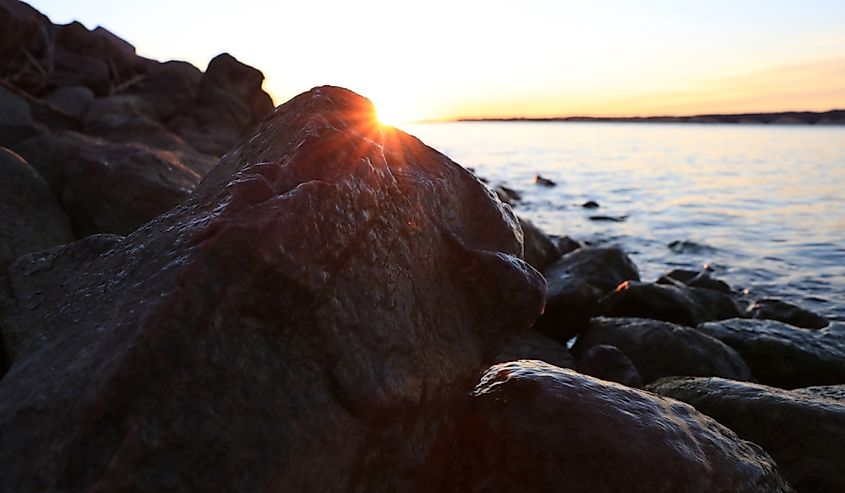
Named after the explorers, Lewis and Clark Lake is one of the most popular lakes in southeast South Dakota. The recreation area features 6 miles of trails just for bikers, a 4-mile multi-use trail, beaches for both swimming and boating, an equestrian base camp for riding, an archery range, and even a Disc Golf course. The popular campground includes amenities like electric hookups, hot showers, and a fish cleaning station for anglers who catch the lake's catfish, bass, and walleye. The moist woodlands around the lake is also home to the Prairie Ringneck Snake, which makes its home only in the southeast corner of South Dakota. The Prairie Ringneck has satiny, smooth scales of gray, black, or brown, and can be spotted by the yellow band around its neck. These snakes are harmless but can easily spook horses that see them napping across sunny trails.
Lake Francis Case and Snake Creek
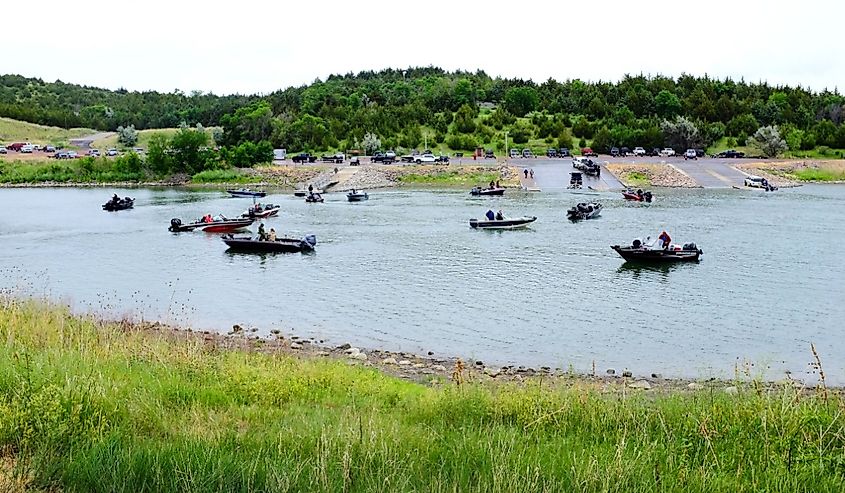
Lake Francis Case is one of four gorgeous reservoir lakes along the Missouri River in South Dakota. Serviced by the Snake Creek Recreation Area, this park is open year-round for lovers of natural beauty. The Shannon Trail is perfect for a short hike, featuring woods filled with Eastern red cedar and snowberry, while white-tailed mule deer, pheasants, turkey, and even bald eagles feed upon the land's bounty. There's history here, too—the Lewis and Clark expedition traveled through the area, where the locals told them to watch for "burning bluffs." However, the ecologically protected tall native grasses can hide Prairie Rattlesnake, so hikers should watch their step and keep an ear out for the telltale rattle of these reptiles.
Sheridan Lake in the Black Hills
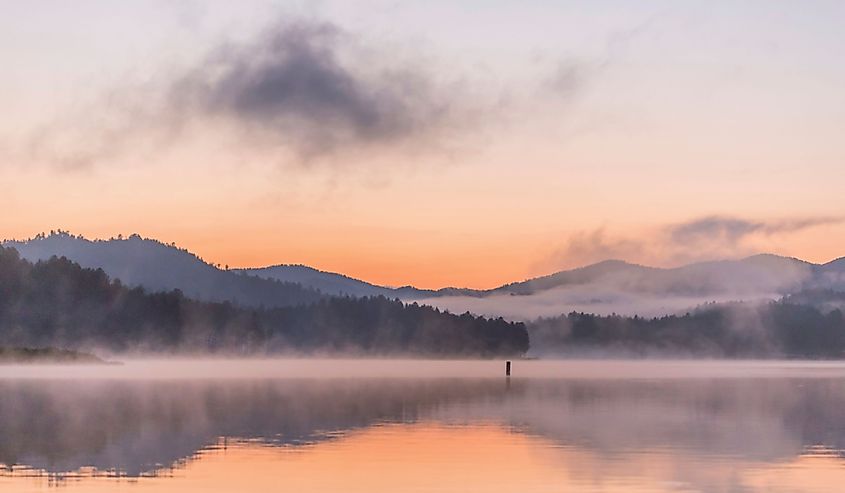
This jewel of the Black Hills features one of the best marinas in South Dakota. Just 15 miles west of Rapid City, this lake has 375 acres of excellent fishing. Anglers can find trout, perch, bass, and northern pike all year round in its warm and inviting waters—the lake is popular with ice fishers during the winter. Sheridan Lake also features the largest campground and swim beach in the Black Hills National Forest. The 11-mile Flume Trail follows the Rockerville Flume, which carried water to gold miners during the 1800s and features historic artifacts and parts of the old flume itself. It's also home to the Eastern Yellow-Bellied Racer snake, known for its greenish-gray or blue scales and pale yellow underbelly. This snake uses its agility and speed to capture prey, hunting small mammals, lizards, and insects with its head lifted off the ground. The Eastern Yellow-Bellied Racer is not a venomous snake, but they will bite to defend themselves if picked up or backed into a corner.
Stockade Lake in Custer State Park
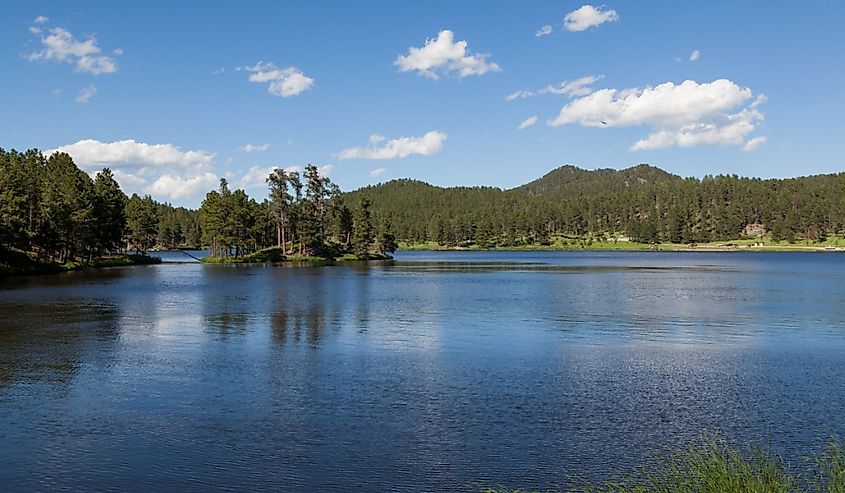
Located just a few miles east of Custer and close to Mt. Rushmore and Crazy Horse, the 120-acre Stockade Lake is the largest in Custer State Park. Anglers will love the opportunity to catch largemouth bass, rainbow trout, and yellow bullheads, while hikers will appreciate the Stockade Lake Trail with its famous "lookout loop" and 400-foot incline. This lake is also home to the Plains (or Western) Hognose Snake, a unique reptile named for its upturned proboscis that resembles a pig's snout. The Hognose Snake uses its unique nose to dig burrows into sandy soil and has a special strategy when threatened: They will flatten their neck and head to create a hood like a cobra's while hissing and thrashing. Unlike a cobra, the Hognose Snake is not dangerous--if threatened further, they will often "play dead" by rolling upside down and opening their mouth.
South Dakota is home to many beautiful lakes, with great opportunities for fly-fishing or ice fishing, swimming, and boating. The hiking trails are full of scenic beauty. Danger lurks in the tall grasses in the form of the Prairie Rattlesnake, but most snakes in South Dakota are not venomous and pose no danger to humans. However, it's dangerous to take chances. Vacationers should be careful around tall grasses or rocky outcroppings that may hide rattlesnakes. If you are bitten by a snake, no matter how small it is, call 911 or seek emergency help immediately.

